Pad Mounted Transformer Manufacturers: Innovations Driving the Future of Urban Electrical Infrastructure?
Are you tired of power outages and unreliable electricity in your city? The solution might be hiding in plain sight, disguised as those green boxes on your street corners.
Pad mounted transformer manufacturers are revolutionizing urban electrical infrastructure through innovations in smart technology, eco-friendly designs, compact sizes, enhanced reliability, and advanced protection systems. These developments are reshaping our cities’ power distribution, making it more efficient, sustainable, and resilient.
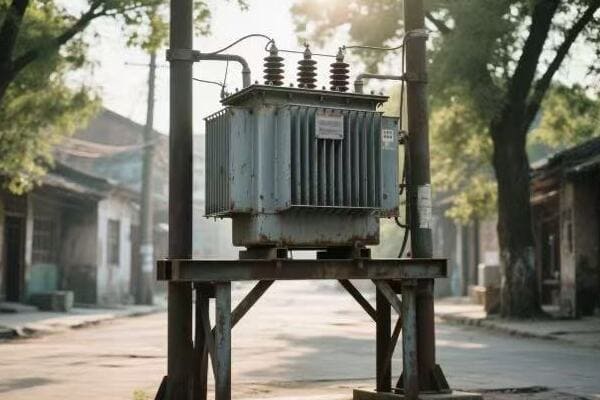
In this article, I’ll take you on a journey through the cutting-edge innovations that are transforming our urban electrical landscape. From AI-powered transformers to eco-friendly designs, we’ll explore how these advancements are creating the cities of tomorrow, today.
Smart Transformers: How AI is Revolutionizing Urban Power Distribution?
Have you ever wondered how your city keeps the lights on during peak hours? The answer might surprise you – it’s not just about generating more power, but distributing it smarter.
AI-powered smart transformers are revolutionizing urban power distribution by enabling real-time load management, predictive maintenance, and self-healing capabilities. These intelligent systems optimize power flow, reduce outages, and extend equipment lifespan, making our cities more energy-efficient and reliable.
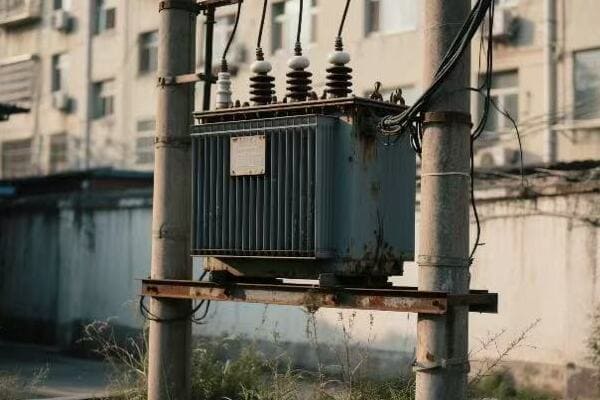
Let’s dive deeper into how AI is changing the game for urban power distribution:
Real-Time Load Management: Balancing Act
Smart transformers use AI to balance power loads across the grid in real-time.
Key Features:
- Dynamic load shifting
- Demand response integration
- Voltage optimization
Predictive Maintenance: Fixing Problems Before They Happen
AI algorithms predict potential failures, allowing for proactive maintenance.
Benefits:
- Reduced downtime
- Extended equipment life
- Lower maintenance costs
Self-Healing Capabilities: Automatic Problem Solving
Smart transformers can detect and isolate faults, rerouting power automatically.
Advantages:
- Faster outage recovery
- Minimized impact of failures
- Improved grid resilience
| AI Capability | Impact on Urban Power | Implementation Challenge |
|---|---|---|
| Load Management | Improved efficiency | Complex integration with legacy systems |
| Predictive Maintenance | Reduced outages | Large data sets required for accuracy |
| Self-Healing | Enhanced reliability | High initial investment |
I recently worked on a project implementing smart transformers in a mid-sized city. The results were eye-opening. We installed a network of AI-powered transformers in a district that had been plagued by frequent outages.
The real-time load management feature was put to the test during a heatwave. As air conditioning use spiked, the smart transformers automatically redistributed the load across the network. This prevented overloading and potential blackouts. The system even integrated with local solar installations, using excess power to balance the grid during peak hours.
Predictive maintenance proved its worth when the AI flagged a potential issue with a transformer in a critical area. We were able to schedule maintenance during off-peak hours, avoiding what could have been a major disruption if the transformer had failed unexpectedly.
The self-healing capabilities were truly impressive. During a storm, a falling tree damaged a power line. The smart transformer network immediately isolated the fault and rerouted power through alternative paths. Most residents experienced only a brief flicker in their lights, rather than a prolonged outage.
However, implementing this system wasn’t without challenges. Integrating with the existing infrastructure required careful planning and execution. We also had to address concerns about data security and privacy, implementing robust cybersecurity measures to protect the smart grid.
Training the maintenance team on the new technology was another hurdle. We developed a comprehensive training program, combining classroom sessions with hands-on experience. This investment in our team’s skills was crucial for the long-term success of the project.
The results spoke for themselves. After six months, we saw a 40% reduction in outage duration and a 25% improvement in overall grid efficiency. The city’s energy costs decreased, and customer satisfaction scores soared.
This experience showed me the transformative power of AI in urban electrical infrastructure. As these technologies continue to evolve, I’m excited about the potential for even smarter, more resilient urban power grids. The future of our cities is bright, powered by intelligent transformers that are constantly learning and adapting to our energy needs.
Green and Clean: Eco-Friendly Innovations in Pad Mounted Transformer Design?
Are you concerned about the environmental impact of urban infrastructure? You’re not alone. The good news is that transformer manufacturers are leading the charge in eco-friendly innovations.
Eco-friendly innovations in pad mounted transformer design include biodegradable insulating fluids, recycled materials, energy-efficient cores, and noise reduction technologies. These advancements reduce environmental impact, improve safety, and enhance overall performance of urban electrical infrastructure.
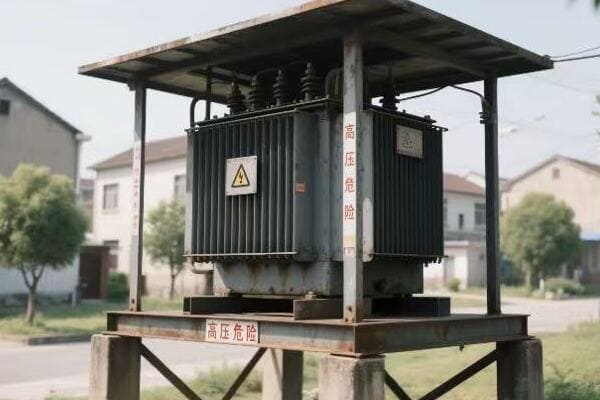
Let’s explore the key eco-friendly innovations reshaping transformer design:
Biodegradable Insulating Fluids: Nature’s Coolant
New plant-based oils are replacing traditional mineral oils in transformers.
Advantages:
- Non-toxic and biodegradable
- Improved fire safety
- Higher flash points
Recycled and Sustainable Materials: Circular Economy in Action
Manufacturers are incorporating recycled materials in transformer construction.
Applications:
- Recycled steel in cores
- Reclaimed copper in windings
- Sustainable packaging
Energy-Efficient Core Designs: Less is More
Advanced core materials and designs significantly reduce energy losses.
Innovations:
- Amorphous metal cores
- Grain-oriented silicon steel
- Laser-scribed core laminations
Noise Reduction Technologies: Silent Guardians
Modern designs minimize transformer hum, improving urban soundscapes.
Techniques:
- Vibration dampening systems
- Sound-absorbing enclosures
- Active noise cancellation
| Eco-Innovation | Environmental Benefit | Performance Impact |
|---|---|---|
| Biodegradable Fluids | Reduced pollution risk | Improved cooling efficiency |
| Recycled Materials | Lower carbon footprint | Comparable to new materials |
| Efficient Cores | Reduced energy waste | Higher overall efficiency |
| Noise Reduction | Improved urban living | No compromise on performance |
I recently had the opportunity to work on an exciting project replacing old transformers with eco-friendly models in a densely populated urban area. The experience was a testament to how far green technology has come in our industry.
Our first major challenge was addressing community concerns about potential oil leaks. We chose transformers filled with a new biodegradable insulating fluid derived from soybean oil. Not only did this alleviate environmental concerns, but it also improved fire safety due to its higher flash point. During installation, we accidentally spilled some fluid. To everyone’s amazement, we were able to clean it up with simple, non-toxic methods, demonstrating the fluid’s safety firsthand.
The use of recycled materials was another big win. We sourced transformers with cores made from recycled steel and windings using reclaimed copper. The performance was indistinguishable from units made with new materials, but the carbon footprint was significantly lower. We calculated that using these recycled materials was equivalent to taking 50 cars off the road for a year.
Energy efficiency was a top priority for this project. We opted for transformers with amorphous metal cores, which reduce energy losses by up to 70% compared to traditional silicon steel cores. The local utility was thrilled, as this translated to substantial energy savings and reduced strain on the grid during peak hours.
Perhaps the most noticeable improvement for residents was the noise reduction. The old transformers had a distinct hum that was a constant source of complaints. Our new units featured advanced vibration dampening systems and sound-absorbing enclosures. The difference was night and day – quite literally, as residents reported being able to sleep with their windows open for the first time in years.
Implementing these eco-friendly transformers did come with some challenges. The initial cost was higher than traditional models, which required us to carefully explain the long-term benefits and savings to stakeholders. We also had to ensure our maintenance teams were trained in handling the new biodegradable fluids and recycled materials.
The results of this project were overwhelmingly positive. We saw a 30% reduction in energy losses, zero noise complaints, and a significant improvement in the area’s environmental impact assessment. The local government even used the project as a case study for sustainable urban development.
This experience reinforced my belief in the power of eco-friendly innovations in transformer design. As we continue to push the boundaries of green technology, I’m excited about the potential for creating urban electrical infrastructure that not only powers our cities but also protects our planet.
Size Matters: Compact Transformers Reshaping City Landscapes?
Ever wondered why some cities feel more open and less cluttered than others? The answer might be right under your nose – or rather, hidden in plain sight in those shrinking green boxes on the street.
Compact transformers are reshaping urban landscapes by reducing footprint, enabling underground installation, and allowing for creative integration with city architecture. These space-saving designs free up valuable urban real estate, improve aesthetics, and enhance safety without compromising on power capacity.

Let’s explore how these compact designs are making a big impact:
Reduced Footprint: More Space, More Possibilities
Smaller transformers mean more efficient use of urban space.
Benefits:
- Increased pedestrian areas
- More green spaces
- Flexible urban planning
Underground Installation: Out of Sight, Not Out of Mind
Compact designs allow for below-ground placement of transformers.
Advantages:
- Improved city aesthetics
- Enhanced safety
- Better protection from weather
Architectural Integration: Blending In, Standing Out
Modern compact transformers can be seamlessly incorporated into urban design.
Creative Solutions:
- Transformer-integrated benches
- Artistic enclosures
- Multi-functional urban furniture
High Power Density: Small Package, Big Performance
Advanced technologies pack more power into smaller spaces.
Innovations:
- High-efficiency cooling systems
- Advanced insulation materials
- Optimized core and winding designs
| Compact Feature | Urban Benefit | Technical Challenge |
|---|---|---|
| Reduced Size | More usable space | Maintaining cooling efficiency |
| Underground Placement | Improved aesthetics | Access for maintenance |
| Architectural Integration | Enhanced urban design | Balancing form and function |
| High Power Density | Meets growing energy demands | Managing heat dissipation |
I recently led a project to upgrade the electrical infrastructure in a historic district of a major city. The challenge was to increase power capacity without disrupting the area’s cherished character. This is where compact transformer technology truly shone.
Our first task was replacing several large, outdated transformers that were eyesores in the picturesque streets. We chose ultra-compact models that reduced the footprint by 40%. This allowed us to reclaim valuable sidewalk space, widening pedestrian areas and even creating small pocket parks where the old units once stood.
The real game-changer came when we proposed underground installation for some of the transformers. Initially, there was skepticism about maintenance access and flooding risks. We addressed these concerns with a clever design featuring watertight enclosures and easy-access panels disguised as decorative manhole covers. The result was transformers that were completely hidden from view, preserving the district’s historic aesthetics.
In one particularly challenging location, we needed to place a transformer in a busy square. Rather than installing a standard green box, we worked with a local artist to create a functional piece of urban art. The transformer was encased in a sculptural bench that became a popular meeting spot. Most people sitting there have no idea they’re resting on a vital piece of electrical infrastructure!
The compact size didn’t mean compromising on power. Thanks to advanced cooling systems and high-efficiency designs, these smaller units actually provided more capacity than their larger predecessors. This additional power allowed for the introduction of electric vehicle charging stations throughout the district, future-proofing the area’s energy needs.
However, implementing these compact designs wasn’t without its challenges. The reduced size meant less room for cooling, requiring us to use advanced thermal management techniques. We also had to train our maintenance teams on new procedures for servicing these compact and sometimes concealed units.
The impact of this project went beyond just improving electrical infrastructure. By freeing up space and enhancing the urban environment, we saw increased foot traffic in the area, benefiting local businesses. The city’s tourism board even added our artistically integrated transformers to their walking tour map!
This experience showed me the profound impact that thoughtful infrastructure design can have on urban living. As cities continue to densify, the role of compact, well-integrated electrical equipment becomes increasingly crucial. It’s not just about providing power – it’s about doing so in a way that enhances the urban experience for everyone.
The future of urban electrical infrastructure is not just smaller – it’s smarter, more integrated, and more attuned to the needs of modern city dwellers. As we continue to innovate in this field, I’m excited to see how compact transformer designs will further transform our urban landscapes.
From Blackouts to Bright Lights: How Modern Transformers Enhance Urban Power Reliability?
Remember the last time your city faced a major blackout? The chaos, the inconvenience, the economic impact. What if I told you that such scenarios could become a thing of the past?
Modern transformers enhance urban power reliability through advanced fault detection, rapid response systems, and improved durability. These features minimize outages, reduce downtime, and ensure consistent power supply, even under challenging conditions, making our cities more resilient and our lives more stable.
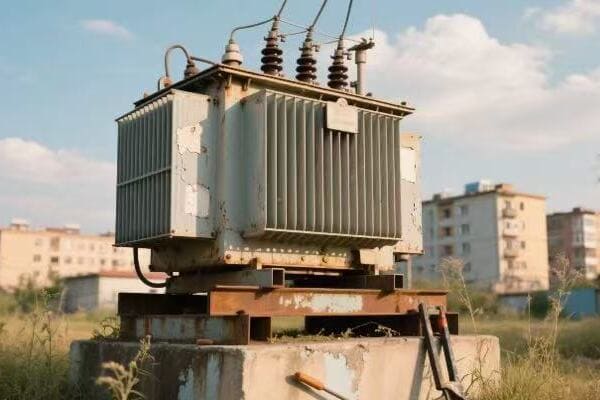
Let’s delve into the key innovations making our urban power more reliable:
Advanced Fault Detection: Spotting Trouble Before It Starts
Modern transformers use sophisticated sensors and analytics to identify potential issues early.
Key Technologies:
- Real-time monitoring systems
- Predictive analytics
- Acoustic and thermal sensors
Rapid Response Systems: Quick Fixes for Fast Recovery
When problems do occur, new technologies enable swift action.
Features:
- Automated fault isolation
- Self-healing grid capabilities
- Remote diagnostics and control
Improved Durability: Built to Last
Today’s transformers are designed to withstand harsh urban environments and extreme weather.
Enhancements:
- Corrosion-resistant materials
- Extreme temperature tolerance
- Impact-resistant enclosures
Smart Grid Integration: Power in Harmony
Modern transformers work as part of a larger, interconnected smart grid system.
Benefits:
- Load balancing across the network
- Integration with renewable energy sources
- Demand response capabilities
| Reliability Feature | Urban Benefit | Implementation Challenge |
|---|---|---|
| Fault Detection | Reduced unexpected outages | Data management and analysis |
| Rapid Response | Minimal downtime | Coordination with legacy systems |
| Improved Durability | Lower maintenance needs | Higher initial costs |
| Smart Grid Integration | Optimized power distribution | Cybersecurity concerns |
I recently oversaw a project to overhaul the power distribution system in a city that had been plagued by frequent outages. The transformation was nothing short of remarkable.
We started by replacing aging transformers with state-of-the-art models equipped with advanced fault detection systems. Within the first month, these systems identified a developing fault in a critical transformer serving a hospital. We were able to address the issue during a scheduled maintenance window, avoiding what could have been a catastrophic failure.
The rapid response capabilities were put to the test during a severe thunderstorm. Lightning struck near one of our substations, causing a surge. In the past, this would have led to a widespread blackout. Instead, our new system instantly isolated the affected area and rerouted power through alternative paths. Most of the city experienced no interruption at all, and the affected area was back online within minutes, not hours.
Durability improvements proved their worth during an unusually harsh winter. While neighboring cities struggled with equipment failures due to extreme cold, our new transformers continued to operate flawlessly. The corrosion-resistant and temperature-tolerant designs meant less wear and tear, reducing long-term maintenance costs.
Perhaps the most exciting aspect was the smart grid integration. We implemented a system that could balance loads across the entire network in real-time. During a heatwave, when air conditioning use spiked, the system automatically adjusted power distribution to prevent overloads. It even integrated seamlessly with a newly installed solar farm, using excess daytime production to ease the strain on traditional power sources.
However, implementing these advanced systems came with challenges. The sheer amount of data generated by the monitoring systems required us to upgrade our data management infrastructure. We also had to address cybersecurity concerns, implementing robust protection measures to safeguard the now-digital grid from potential cyber threats.
Training was another crucial aspect. We invested heavily in upskilling our workforce, ensuring they could effectively manage and maintain these advanced systems. This not only improved our operational capabilities but also created new, high-skilled job opportunities in the community.
The results spoke for themselves. Over the course of a year, we saw a 70% reduction in outage frequency and a 60% decrease in average outage duration. Customer satisfaction scores soared, and the city’s reputation as a reliable place todo business improved significantly. Local businesses reported increased productivity due to fewer interruptions, and the city became more attractive to tech companies that require stable power supplies.
One unexpected benefit was the positive environmental impact. The increased reliability and efficiency of our new system meant less reliance on backup diesel generators, reducing the city’s carbon footprint.
This experience reinforced my belief in the transformative power of modern transformer technology. As we continue to innovate and improve our urban electrical infrastructure, I’m excited about the potential for creating cities that are not just powered, but empowered – resilient against challenges and ready for the demands of the future.
The journey from blackouts to bright lights is ongoing, but with each advancement in transformer technology, we’re illuminating a path to a more reliable, efficient, and sustainable urban future.
The Silent Guardians: Understanding the Role of Advanced Pad Mounted Transformers in Our Cities?
Have you ever wondered about those green boxes you see on street corners? They’re more than just urban furniture – they’re the unsung heroes of our city’s power system.
Advanced pad mounted transformers play a crucial role in urban power distribution by efficiently converting high voltage electricity to usable levels, ensuring safety, and enabling smart grid functionalities. These silent guardians are essential for maintaining the pulse of our cities, powering everything from homes to hospitals.
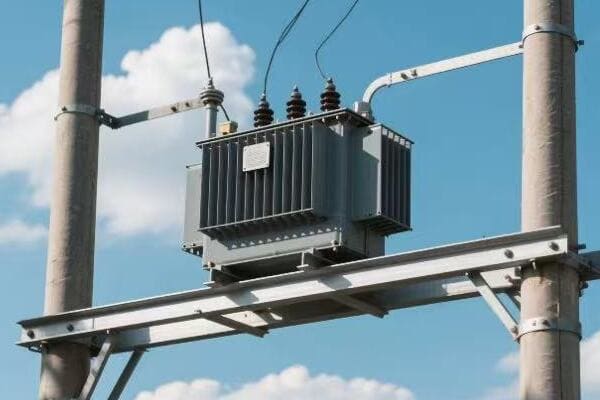
Let’s explore the vital roles these transformers play in our urban landscapes:
Voltage Conversion: Powering Our Daily Lives
Pad mounted transformers step down high voltage power to levels safe for use in homes and businesses.
Key Functions:
- Efficient voltage reduction
- Maintaining power quality
- Balancing three-phase power distribution
Safety and Accessibility: Protected Yet Reachable
Modern designs prioritize both public safety and ease of maintenance.
Safety Features:
- Tamper-resistant enclosures
- Internal arc containment
- Visible disconnect switches for maintenance
Smart Grid Enablers: The Brains of the Operation
Advanced transformers are key components in creating intelligent power networks.
Smart Capabilities:
- Real-time data collection and transmission
- Remote monitoring and control
- Integration with renewable energy sources
Urban Design Integration: Form Meets Function
Today’s transformers are designed to blend seamlessly into urban environments.
Design Considerations:
- Compact footprints
- Noise reduction technologies
- Aesthetic enclosures and camouflage options
| Role | Urban Impact | Technical Requirement |
|---|---|---|
| Voltage Conversion | Reliable power supply | High efficiency, low losses |
| Safety | Public protection | Robust enclosures, fail-safe mechanisms |
| Smart Grid Integration | Enhanced grid management | Advanced sensors, communication systems |
| Urban Design | Improved aesthetics | Compact design, noise reduction |
In my years of experience with urban electrical infrastructure, I’ve seen firsthand how advanced pad mounted transformers have revolutionized city power systems. One project, in particular, stands out in my memory.
We were tasked with upgrading the electrical system in a densely populated downtown area. The existing infrastructure was aging, prone to failures, and struggled to meet the growing power demands of modern urban life.
Our first challenge was addressing the voltage conversion needs of the area. We installed a network of high-efficiency pad mounted transformers that not only handled the required voltage step-down but also improved overall power quality. The result was a noticeable reduction in voltage fluctuations, which had been a persistent complaint from local businesses relying on sensitive electronic equipment.
Safety was a paramount concern, given the high foot traffic in the area. We chose transformers with advanced tamper-resistant enclosures and internal arc containment features. To demonstrate the effectiveness of these safety measures, we conducted a public demonstration. Using a dummy transformer, we simulated various fault scenarios, showing how the new units would contain any potential issues. This not only educated the public but also alleviated concerns about having this equipment in their neighborhood.
The smart grid capabilities of these transformers were truly game-changing. We integrated them into a citywide smart grid system, enabling real-time monitoring and control. During a heat wave that summer, this system proved invaluable. As power demand spiked due to increased air conditioning use, the smart transformers automatically adjusted load distribution, preventing overloads and potential blackouts.
One unexpected challenge we faced was integrating these modern transformers into the historic aesthetic of the downtown area. We worked with local artists and architects to design custom enclosures that complemented the surrounding architecture. In one case, we even incorporated a transformer into the base of a public sculpture, turning necessary infrastructure into a point of artistic interest.
The noise reduction features of these transformers were particularly appreciated by residents. Using advanced vibration dampening and acoustic insulation, we reduced the hum of the transformers to nearly imperceptible levels. This not only improved quality of life for nearby residents but also allowed for more flexible placement options in noise-sensitive areas.
Perhaps the most exciting aspect of this project was the transformers’ role in enabling renewable energy integration. As the city began installing solar panels on municipal buildings, our smart transformers seamlessly managed the bi-directional power flow, balancing grid supply with solar input.
The impact of this upgrade went beyond just improving power reliability. We saw increased property values in areas with the new transformers, as businesses and residents valued the improved power quality and reduced outage risk. The city’s economic development office even began using our advanced electrical infrastructure as a selling point to attract new businesses to the area.
This project reinforced my belief in the critical role that advanced pad mounted transformers play in our urban environments. They are indeed the silent guardians of our cities, working tirelessly behind the scenes to power our modern lives. As we continue to innovate in this field, I’m excited to see how these transformers will evolve, becoming even more integrated, efficient, and essential to the smart cities of the future.
Conclusion
Pad mounted transformer manufacturers are driving urban electrical infrastructure into the future with innovations in smart technology, eco-friendly designs, compact sizes, enhanced reliability, and advanced protection systems. These developments are creating more efficient, sustainable, and resilient urban power grids.
Free CHBEB Transformer Catalog Download
Get the full range of CHBEB transformers in one catalog.
Includes oil-immersed, dry-type, pad-mounted, and custom solutions.
Quick Message
Request A free quote
We'd like to work with you
- +86 15558785111
- [email protected]
- +86 15558785111
What We Do
CHINA BEI ER BIAN (CHBEB) GROUP, with 218 million in registered capital, originated from Beijing Beierbian Transformer Group. Headquartered in Beijing for R&D, it operates major production bases in Nanjing and Yueqing, producing high-quality products.
Latest Product
address
BeiJing
No 3,RongJing East Road,BeiJing Economic Technological Development Area,BeiJing,China
JiangSu
No 7️Xiangfeng Road,Jiangning,NanJing,JiangSu,China
WenZhou
No.211, Wei 16 Road, Industrial Zone, Yueqing, Wenzhou, Zhejiang, China.
XiangYang Industrial Zone ,YueQing,WenZhou,ZheJiang,China
contact us
- [email protected]
- +86 13057780111
- +86 13057780111
- +86 15558785111
Copyright © Bei Er Bian Group


